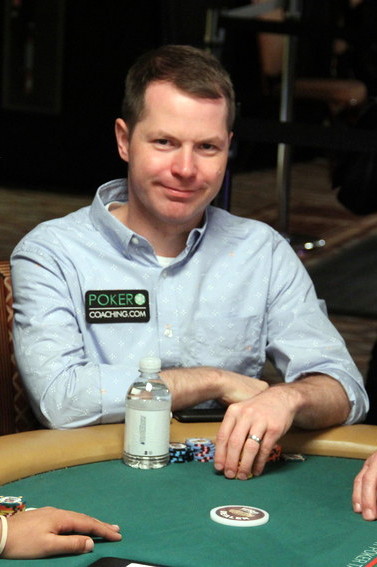[ad_1]
 If you want to increase your poker skills and learn to crush the games, check out Jonathan Little’s elite training site at PokerCoaching.com/CardPlayer.
If you want to increase your poker skills and learn to crush the games, check out Jonathan Little’s elite training site at PokerCoaching.com/CardPlayer.
I was recently told about a hand in a $500 buy-in poker tournament that illustrates a few mistakes that some players make on a regular basis.
With blinds at 300-600, an amateur player limped in with a 33,000 stack from first position at a nine-handed table with A 10
10 .
.
While A-10 may seem like a decent hand because it contains two big cards, you are usually better off folding it from early position, because if you face any amount of aggression, you could easily be dominated.
If you do decide to play it, you should raise in order to have some chance to steal the blinds before the flop, and to also have the ability to better control the action post-flop.
The player in second position, who seemed to play well, raised to 2,200. Only the amateur called.
At this point, folding may be the best play. If you think about which hands a player in second position should raise over a first-position limp, the vast majority of the raiser’s range dominates the amateur’s A-10. Playing dominated hands from out of position in a raised pot is asking for trouble.
The flop came A 10
10 8
8 , giving the amateur top two pair. That is lucky! The amateur led for 2,500 into the 5,300 pot.
, giving the amateur top two pair. That is lucky! The amateur led for 2,500 into the 5,300 pot.
On boards that favor the preflop raiser, you should not have a leading range because on average, you will be decently far behind. This flop should be better for the preflop raiser because the raiser should have all of the best aces and big pairs in his range whereas the amateur should only have perhaps 8-8 and A-10 (assuming the amateur would limp/call with these hands).
The player in second position called the 2,500 bet. The turn was the J , and the amateur bet 5,500 into the 10,300 pot.
, and the amateur bet 5,500 into the 10,300 pot.
If you decided to lead the flop, continuing to bet the turn is fine. It is somewhat difficult to get called by K-K and Q-Q, but A-K and A-Q will never fold.
When trying to extract value, it is important to figure out which hands can realistically call. If your opponent’s marginal hands (such as K-K and Q-Q) will fold to any additional bet on the turn or river, you should ignore those and instead focus on getting maximum value from the next best hands (the top pairs), which will likely call a larger bet than 5,500.
With that in mind, I would have bet 8,000, which would have left the amateur with a nice remaining stack of 21,300 with the pot being 26,300. Especially when you are primarily value betting, when you can bet a bit more money on the turn such that you have a remaining stack size that is a bit less than the size of the pot going to the river, you should. By betting a bit larger on the turn, you stand a much better chance of an additional bet getting called on the river.
 player in second position called the 5,500 bet. The river was the 10
player in second position called the 5,500 bet. The river was the 10 , improving the amateur to a full house. The amateur pushed all-in for 23,800 into the 21,300 pot.
, improving the amateur to a full house. The amateur pushed all-in for 23,800 into the 21,300 pot.
Given the opponent’s range is almost entirely marginal made hands that are worse than the amateur’s, the amateur should bet because if he checks, his opponent will check behind the majority of the time. When determining how much to bet, you should choose an amount that can get called by most of your opponent’s made hand range.
So, how much will A-K and A-Q call? Some players will only call a small bet, fearing they are beat, whereas other players will call any bet because they are incapable of folding top pair with a premium kicker. While it is nearly impossible for the amateur to be bluffing in this situation, I think going all-in makes the most sense against a generic player in a $500 buy-in tournament.
Luckily for the amateur, his opponent called and then mucked, giving the amateur a full double up.
While the amateur got a double this time, more often than not, his opponent will have a hand that will simply fold to the flop lead, resulting in the amateur winning almost nothing. Just because a play works out this time does not mean it is the correct play on average. ♠
 Jonathan Little is a two-time WPT champion with more than $7 million in live tournament earnings, best-selling author of 15 educational poker books, and 2019 GPI Poker Personality of the Year. If you want to increase your poker skills and learn to crush the games, check out his training site at PokerCoaching.com/cardplayer.
Jonathan Little is a two-time WPT champion with more than $7 million in live tournament earnings, best-selling author of 15 educational poker books, and 2019 GPI Poker Personality of the Year. If you want to increase your poker skills and learn to crush the games, check out his training site at PokerCoaching.com/cardplayer.
[ad_2]
Source link